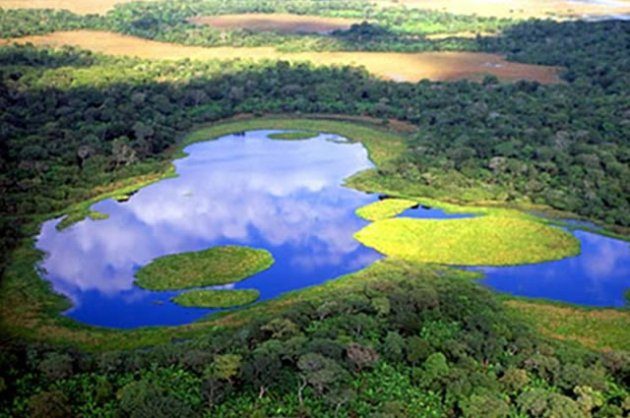The **World Wetlands Day** gives us the opportunity to highlight the vital importance of these **ecosystems** and the **biodiversity** they harbor. Often, wetlands do not receive the necessary recognition to maintain the balance of life on **Earth**.
## Protecting Wetlands for Our Common Future
The **biological diversity** of wetlands is crucial for **human health**, food supply, transportation, and economic activities that **generate employment**, such as fishing and tourism. They constitute the **habitat for 40% of all plant and animal species in the world**. For this and other reasons, on February 2, 1971, in **Ramsar**, 18 nations signed an intergovernmental treaty to protect them.
Wetlands in a broad definition include **freshwater, marine, and coastal ecosystems**, such as lakes and rivers, underground aquifers, swamps and marshes, wet grasslands, peatlands, oases, estuaries, deltas, mangroves and other coastal areas, coral reefs, and man-made sites such as fish ponds, rice fields, reservoirs, and saltworks.
## Valuable and Indispensable Ecosystems
Wetlands represent one of the most valuable ecosystems on Earth, essential for humans and nature due to the benefits and services they provide. Although they only **cover about 6% of the Earth’s surface, they are the habitat for 40% of all plant and animal species**.
## Livelihood for Millions of People
More than one billion people (an eighth of the world’s population) living in rural and urban areas worldwide depend on wetlands as a means of livelihood.

## Why Are They in Danger?
Despite the significant benefits they provide, **wetlands are one of the ecosystems most affected by deterioration, loss, and degradation**. This negative trend is expected to continue due to rapid population growth, unsustainable production and consumption, technological development, and climate change.
With a **35% loss worldwide in the last 50 years**, starting in 1970, wetlands are our most threatened ecosystem, disappearing three times faster than forests.
Human activities causing wetland loss include drainage and filling for agriculture and construction, pollution, overfishing, overexploitation of resources, invasive species, and climate change.
This vicious circle of **wetland disappearance**, threatened livelihoods, and increased poverty is the result of a **misconception that views wetlands as wastelands** rather than sources of life, jobs, income, and essential ecosystem services. One of the key challenges is to change this mindset and encourage governments and communities to value and prioritize wetlands.
## What Can We Do to Care for Wetlands:
Caring for wetlands is crucial to preserve their biodiversity and the ecosystem services they provide. Here are some actions we can take to protect these valuable ecosystems:
1. **Avoid pollution**: Do not throw garbage or chemicals into wetlands. Participate in cleanup campaigns and promote the use of biodegradable products.
2. **Restore degraded wetlands**: Support restoration projects aimed at recovering wetlands damaged by human activities.
3. **Conserve water**: Practice responsible water use in our daily activities to reduce pressure on wetlands.
4. **Promote protection policies**: Advocate for laws and regulations that protect wetlands from destruction and degradation.
5. **Educate and raise awareness**: Inform the community about the importance of wetlands and how everyone can contribute to their conservation.
6. **Support sustainable activities**: Encourage sustainable agricultural and fishing practices that do not harm wetlands.
7. **Respect wildlife**: Do not disturb the animals and plants that inhabit wetlands. Observe without interfering.
**[¿Ya conoces nuestro canal de YouTube? ¡Suscríbete!](https://www.youtube.com/channel/UCrYLIWysAyv4m833zGAQ02g)**

